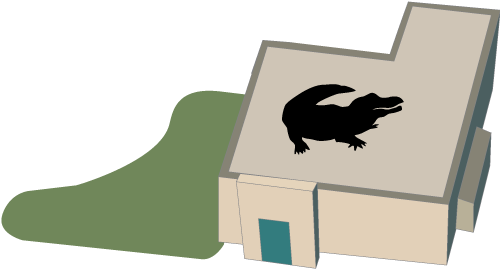Panamanian Golden Frog
Atelopus Varius Zeteki
Scientific Name
Panamanian Golden Frog:
Atelopus Varius Zeteki
Distribution and Habitat
Geographic Range
This golden beauty makes its home on the slopes of Central Cordilleran rainforests of west-central Panama.
Natural Habitat
This species as mentioned above thrives in the rainforest living along streams and rivers.
Physical Characteristics
-
This species of frog is a brilliant orange-yellow color splotches. with black spots on the back, the sides and the head or with three transverse black bands. Young specimens show normally an X-shaped dark mark beginning on the upper eyelid, a single or double snout-spot, a broad dark band across the middle of the body; a spot on the elbow and a wristband, and dark bands on the thigh, knee, shin, heel, tarsus and toes. They are an earless frog that uses its lungs, along with hand signals to communicate. They are able to hear by picking up sound waves through their lungs!
Quick Facts
-
- That the Panamanian golden frog has become a cultural symbol in the Republic of Panama much as the bald eagle has in the United States of America.
- Males are 1.5 to 2 inches; females are 2 to 3 inches.
- Golden frogs remain in the tadpole stage for a period of 120-240 days when they emerge from the water as tiny frogs.




